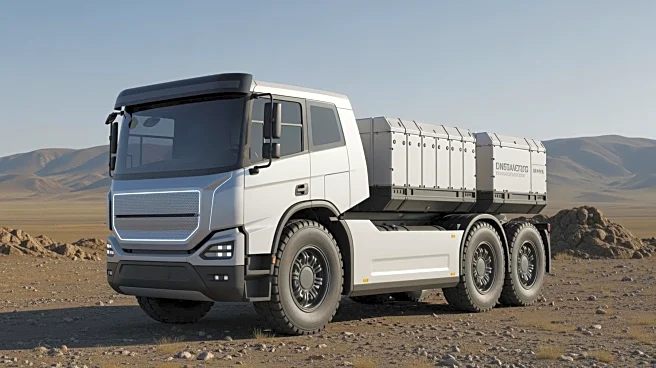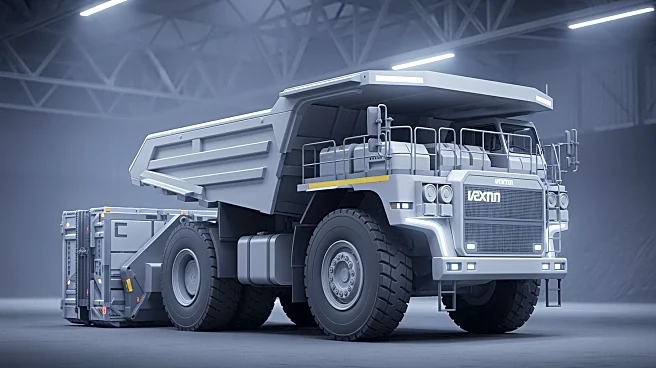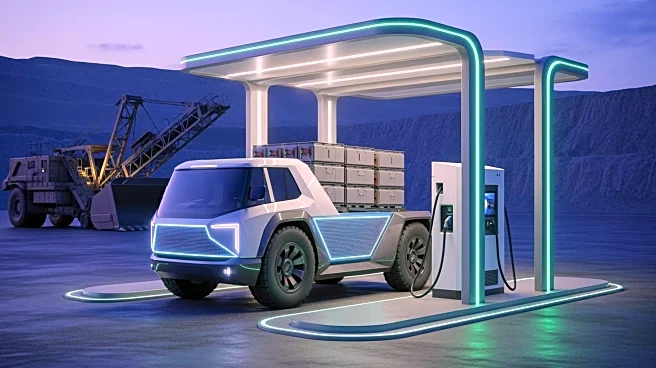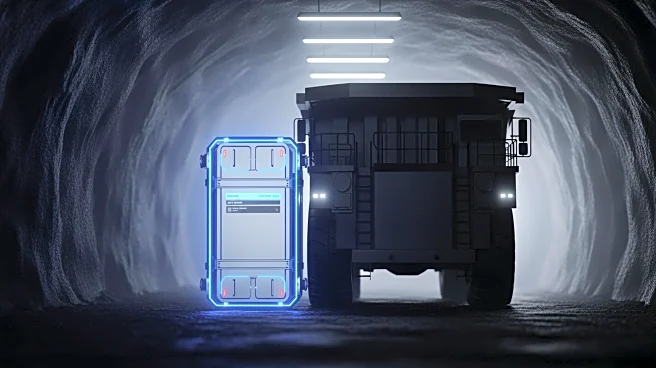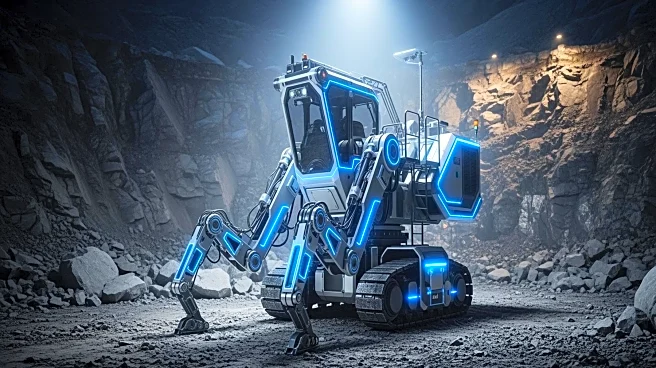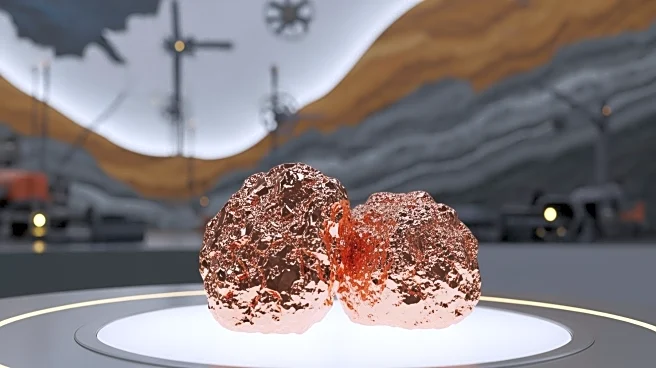What's Happening?
Rio Tinto, in partnership with State Power Investment Corporation (SPIC) Qiyuan, has initiated a trial of battery swap electric haul truck technology at the Oyu Tolgoi copper mine in Mongolia. This marks
Rio Tinto's first use of such technology in surface mining operations. The trial involves eight 91-tonne Tonly trucks equipped with battery swapping technology, allowing batteries to be replaced in under seven minutes. The trucks will be used for tailings dam construction and topsoil transportation, providing operational experience with battery electric truck systems. The trial aims to accelerate low-carbon innovation and support Rio Tinto's decarbonization goals.
Why It's Important?
The trial represents a significant step towards reducing emissions in the mining industry, which is traditionally carbon-intensive. By adopting battery swap technology, Rio Tinto is exploring cost-effective and efficient solutions to enhance operational efficiency and reduce environmental impact. This initiative aligns with global efforts to transition to sustainable energy sources and could set a precedent for other mining companies to follow. The partnership with SPIC Qiyuan highlights the importance of collaboration in advancing green technology and achieving decarbonization targets.
What's Next?
The trial will continue until the end of 2026, providing Rio Tinto with valuable insights into the feasibility and benefits of battery swap technology in mining operations. Depending on the trial's success, Rio Tinto may consider wider adoption of this technology across its global fleet. The company could also explore further partnerships to enhance its low-carbon initiatives and drive innovation in the mining sector.
Beyond the Headlines
The adoption of battery swap technology in mining could have broader implications for the industry, potentially leading to shifts in operational practices and investment in green technologies. This trial may also influence regulatory policies and encourage other companies to prioritize sustainability in their operations. The focus on reducing emissions aligns with global environmental goals and could contribute to long-term shifts towards cleaner energy solutions.
